French Press Coffee, Done Right
Table of Contents
When working through at-home coffee-brewing experiences, one of the first steps coffee drinkers look to take is moving from a coffee pot to a French press. Any bag of coffee has the potential to taste differently when its ground in different ways and brewed with different methods. We’re here to help guide you through the process of finding the best coffee for French press brewing.
What You Need
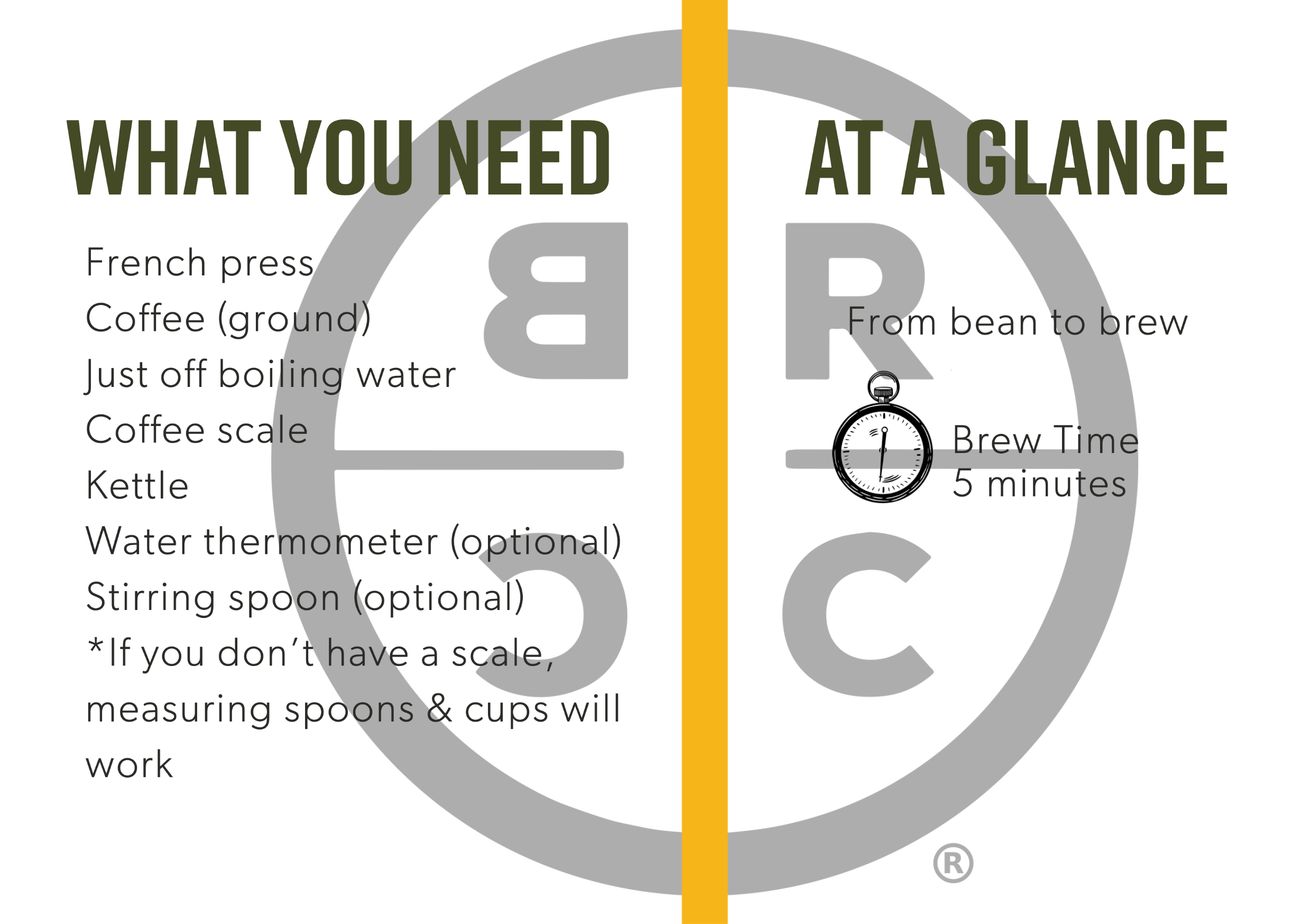
How Does a French Press Work
Simply put, French presses work by steeping coarse coffee grounds and hot water in a beaker. After the recommended steep time, you press the plunger down, which uses a screen to separate the grounds from the water, and your coffee is ready to drink! A typical French press has a triple-screen system, ensuring that your coffee grounds are fully strained and stay separated from the final product, your coffee.

The History of French Press
This underrated and low-maintenance method of brewing coffee dates back to the 1850s. According to coffee legend, a Frenchman was brewing coffee while taking his morning walk. While walking, he realized that he’d forgotten to add his coffee grounds to the water before setting out. In a panic, he added ground coffee to his already hot water. To save the brew, he bought a piece of metal screen from an Italian merchant and used a stick to press the screen through the liquid and filter out the grounds.
Legend or not, the French press was patented in 1852 by two Frenchmen, Mayer and Delforge. This initial design was incredibly simple, and the first patent that resembles the presses we use today was patented in 1929 by two Italian designers, Attilio Calimani and Giulio Moneta.
How to Brew a Perfect French Press
Megan Shields is one of BRCC’s Q-graders, like a wine sommelier for coffee. Here’s her preferred French press brewing method using the ESPRO French Press because, as she says, “it has two micro filters plus a big one on the plunger spout.”
- Ideal Grind: Coarse, think sea salt, bigger particles than that for drip or typical ground coffee. Coarsely ground coffee allows for the best extraction during the brewing process.
- Steep Time: 7-9 minutes
- Best Coffee: The good shit; depending on your ideal roast, any coffee can work as long as it is as fresh as you can get it and freshly ground.
-
Best French Press: ESPRO 18 oz. Coffee French Press
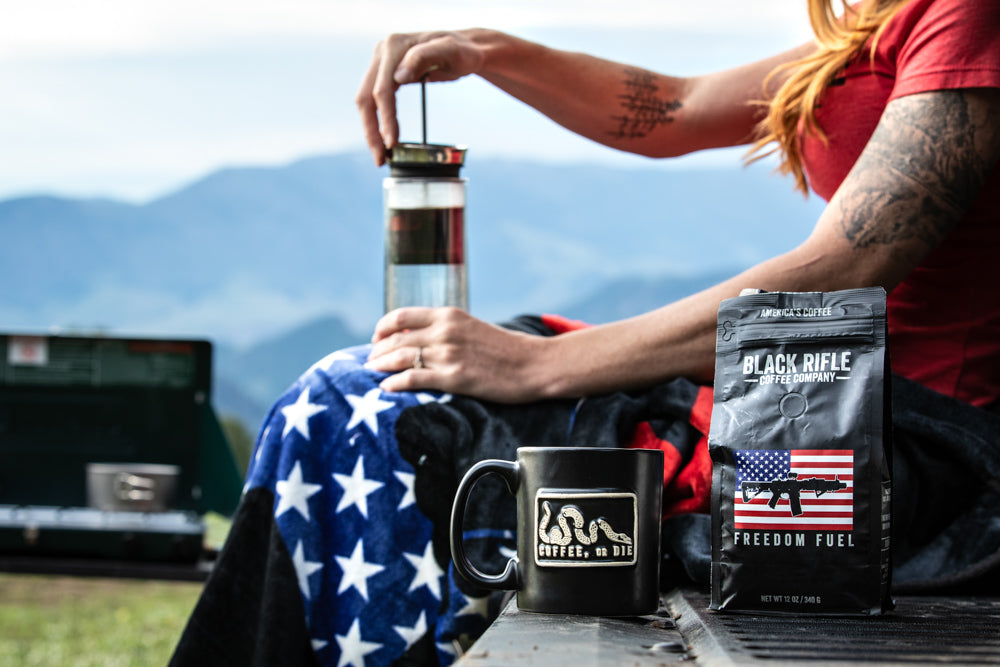
Best Coffee for French Press Brewing at a Glance
As far as the “best coffee” for a French press is concerned, there honestly isn’t one, French press coffee beans don’t exist as a category of coffee. You can make just as good a cup of Colombian coffee in a French press as you can a Guatemalan coffee — it’s all about how you grind it.
“The most important thing is having freshly ground coffee,” Shields said. “The extraction process for a French press is longer, and the coarser grounds help to prevent bitterness or over-extraction. I personally like a light roast where most people think they need a dark roast.”
It’s also essential to note French presses deliver a more robust cup of coffee than you may be used to, so looking for coffees in the darker roast family that have dark chocolate or nutty flavor profiles will be complementary to this particular brew method.
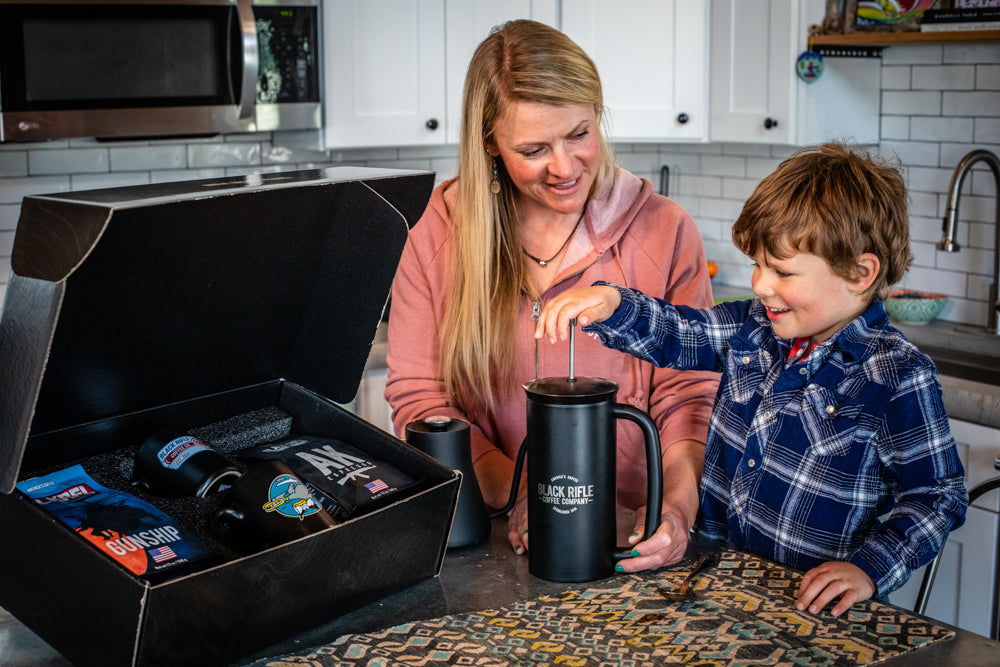
French Press vs. Everything Else
Unlike many other brewing methods, such as Chemex and V60, a French press is an immersion brew.
Instead of the pour-over methods where water continually passes through the grounds and a paper filter, in the French press, the ground coffee is immersed completely, allowing the oils in the coffee to diffuse throughout the water. The beans for a French press should be coarsely ground. This prevents a coffee flavor over-extraction as well as preventing the grounds won’t escape into the coffee once you’ve depressed your coffee plunger.
Regardless of what you call it —French press, cafetiere, caffettiera a stantuffo, cafetière à piston, Stempelkanne, or coffee plunger — this brewing method produces a full-bodied coffee that you can prepare anywhere, from your kitchen to your office to a campground or on a tailgate. Many of today’s French presses are made from materials other than glass; they’re durable and versatile, allowing you to get your caffeine fix with no other tools. As long as you have hot water and your ground coffee, you’re good to go– there are no filters to worry about, and the only thing you might run out of is coffee.
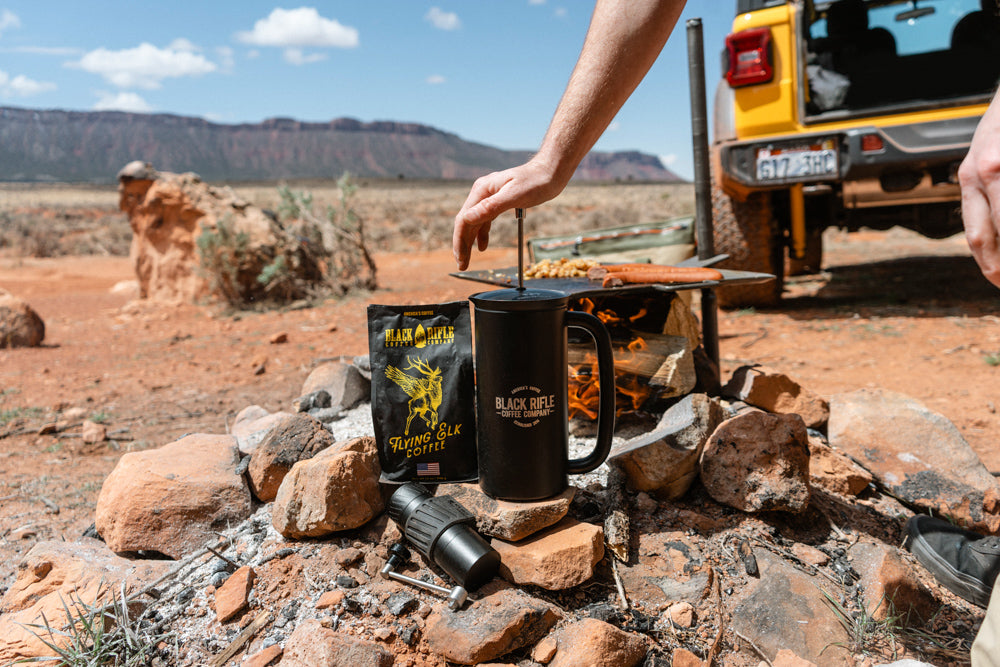
French Press Brewing Step by Step
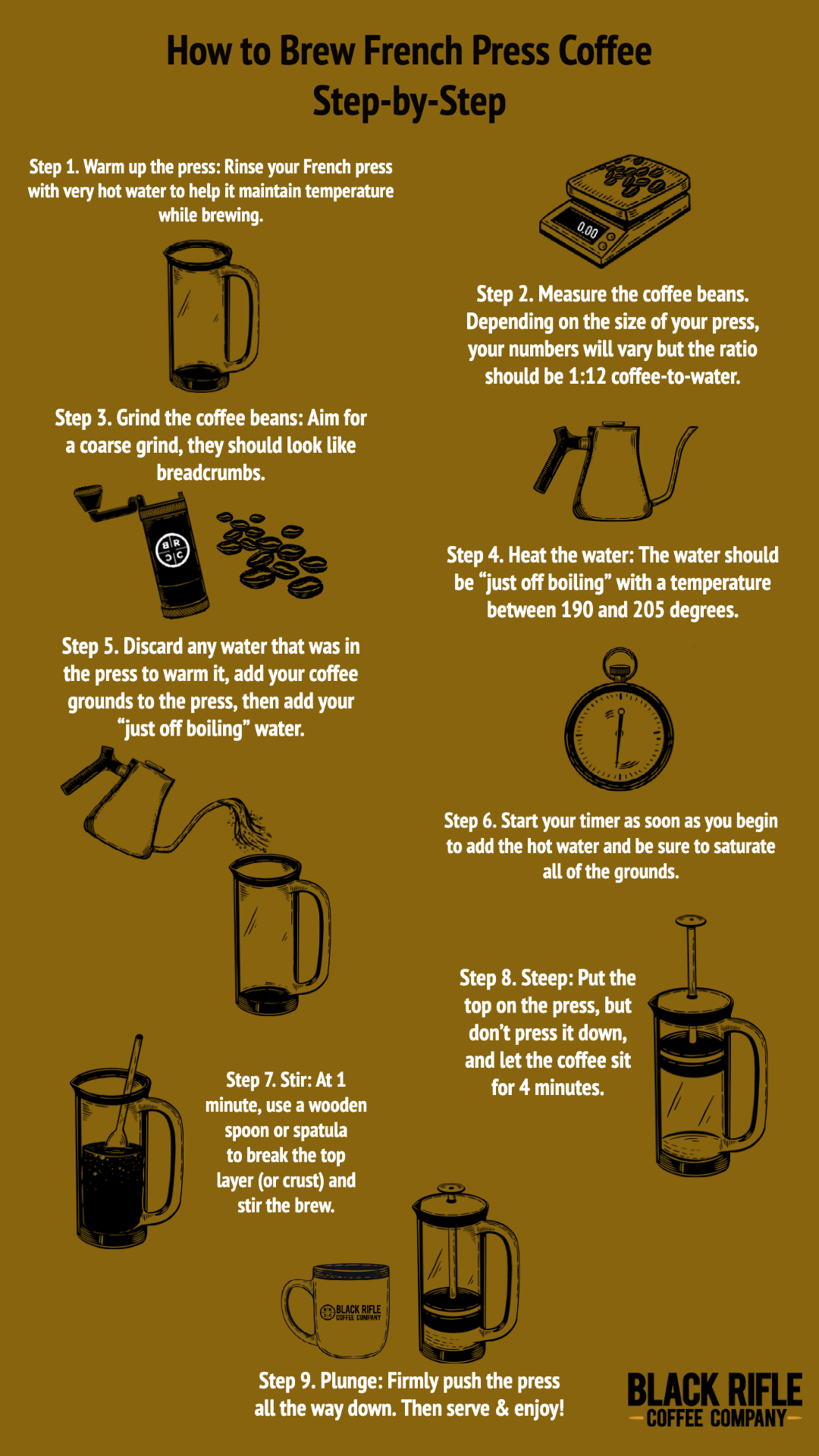
If you’re entirely new to the French press scene or just want to see how a certified coffee pro uses their press, you’re in luck. Follow along below to see how the BRCC crew brews with their French press.
“I really like to use 20 grams of coffee to about 333 grams of water,” Shields explains. "If you’re familiar with the James Hoffman recipe, this should sound familiar.”
- Grind coffee beans. Make sure you get a coarse grind.
- Aim for a coffee-to-water ratio of 20 grams of coffee to 333 grams of water.
- Add your coffee grounds to the French press.
- Add boiling water to the coffee grounds. (Hoffman’s recipe just calls for a boil, but anywhere around 205 degrees is perfect.)
- After pouring the water into the press, wait about 30-40 seconds before giving the mixture a gentle stir to help promote coffee extraction. (Pay attention to your coffee grounds, when they start to sink to the bottom of your press, it's a sign the coffee is brewing.)
- Set a timer for between 7 and 9 minutes.
- When the timer goes off, gently and slowly depress the plunger into the press.
- Once the plunger reaches the bottom, the process is complete, and the coffee is ready to pour
Water temperature is essential for this process. You have to pay attention to the temperature to ensure your coffee doesn’t taste burnt, which happens when the water is too hot, or tastes flavorless, which occurs when the water is too cool, and the extraction process doesn’t happen properly.
Even though most of the coffee extraction is complete, it’s a good idea to pour your coffee sooner rather than later as the coffee can continue to extract and may start to taste bitter or sour if left in the press. If it’s hard to press the filter down, it means your grounds are too fine; likewise, if it sinks with little resistance, the grounds are too coarse.
Choose the Right French Press
Best for Beginners: OXO GroundsLifter French Press
This borosilicate glass carafe and stainless steel frame won’t be your favorite if you tend to drop things, but this is the classic French press design and delivers full-bodied brews. Plus, the grounds lifter helps to remove the used coffee grounds from the bottom of the press, so you’re not scooping them or shaking them out. (Find at Amazon. Price €32.99)
Best for Adventurers: Bestargot Camping Titanium French Press 750 ml
This press can handle hot coals, a gas burner, or a bonfire. For the on-the-go camper who needs a lightweight press that also doubles as a way to heat up soup or noodles, any basic backcountry meal– just be sure to bring along an oven mitt since this is an all-metal design. (Find at Bestargot. Price €38.99)
Best for a Group: Stanley Classic Camp French Press 48 oz.
If you’re serving a large group or just need a lot of coffee to get through a tailgate, this hefty 48-ounce model is for you. Stanley makes a solid set of brewing gear for outdoor adventures, and this press is no different. (Find at Amazon. Price €52.50)
Best on a Budget: Coffee Gator French Press
This stainless steel press is easy to clean and the dual filter screen works as well as some more expensive counterparts. Unlike some other affordable presses, this option isn’t glass so if you drop it the press will survive. Speaking from experience, if you have family members that overdo it on pressing the grounds, replacing the filter is also easy.
(Find at Amazon. Price €32.79)
Best Splurge: Espro 18 oz. Coffee French Press P7
This double micro-filter is 9-12 times finer than the average French press filter and happens to be double-wall vacuum insulated as well. This 18 oz. press has 530 ml of volume, and you can actually brew up to 24 oz. in it, but it’s recommended to brew just 18 oz. at a time. (Find at Coastalvir giniadriving. Price €99.99)
Regardless of where you are in your coffee journey, there’s never a bad time to try a new brewing method and experiment with different ways to enjoy your favorite beans.





